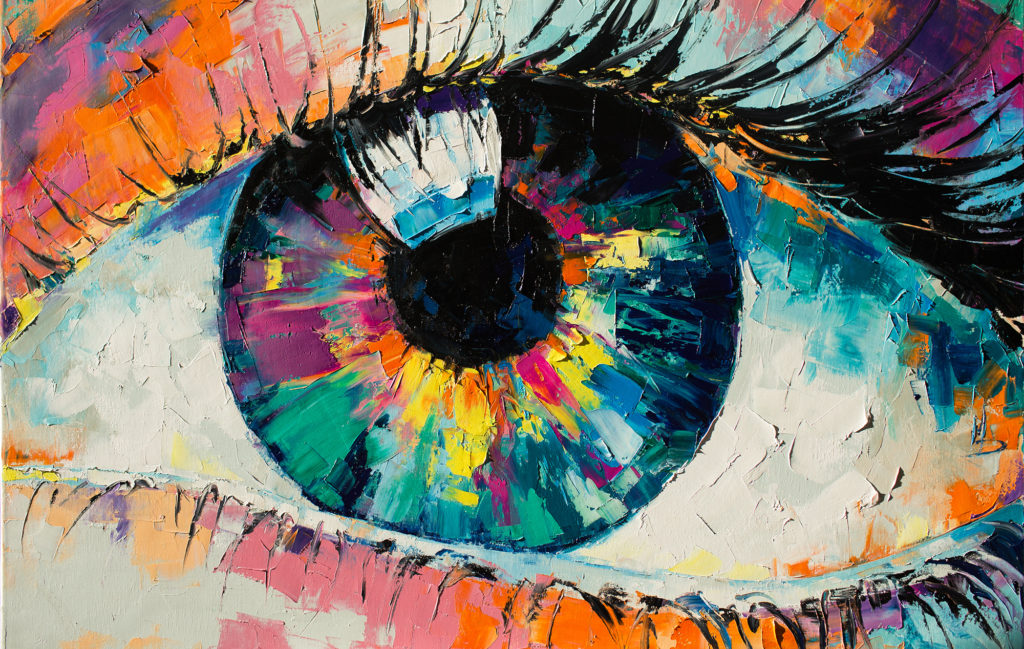The Intersection of Politics and Aesthetic Appeals in Trump Art
Delving Into the Diverse Globe of Artistic Expression: From Surrealism to Abstract Realism
In the world of creative expression, from the dreamlike landscapes of surrealism to the elaborate play of light and kind in abstract realism, musicians have constantly pushed the borders of imagination and imagination. Each activity holds a special lens through which the globe is viewed and translated, offering a glance right into the depths of human emotion, perception, and believed. As we explore the diverse globe of art, we are provided with a tapestry of designs, methods, and philosophies that test our understanding and prompt contemplation. The trip via these diverse kinds of artistic expression guarantees to unravel an abundant tapestry of aesthetic storytelling and intellectual query that captivates the mind and stirs the spirit.
Surrealism: Letting Loose the Subconscious
Surrealism, an avant-garde artistic motion of the 20th century, dived into the depths of the subconscious, unveiling a world of dream-like imagery and unique associations. Pioneered by musicians like Salvador Dali, René Magritte, and Joan Miró, Surrealism looked for to test the standard means of seeing and understanding art. With methods such as automatism and dream analysis, Surrealist artists aimed to take advantage of the subconscious mind to disclose surprise facts and needs.
Among the crucial elements of Surrealism was the focus on the illogical and the extraordinary. By combining unexpected elements in their works, Surrealist musicians intended to develop a feeling of disorientation and surprise in the audience. This disruption of logic and reason was meant to provoke a much deeper expedition of the subconscious and the secrets of the human psyche.
Abstract Realism: Redefining Assumption
Testing typical imaginative borders, Abstract Realism redefines perception via the fusion of well-known aspects with abstract types. This innovative approach to art combines the representational accuracy of realistic look with the innovative freedom of abstraction, offering visitors an one-of-a-kind visual experience that prompts them to examine their understanding of reality.
In Abstract Realistic look, artists make every effort to catch the essence of their topics while likewise infusing their deal with a sense of deepness and complexity through abstract components. By blending the acquainted with the unknown, these musicians invite target markets to involve with their items on several levels, urging them to explore the subtleties of form, shade, and texture.

Cubism: Fragmentising Fact
Using fragmented point of views and geometric forms, Cubism changed the creative representation of reality in the early 20th century. This strategy not just deconstructed truth but also stressed the flatness of the canvas, leading the way for future abstract read the full info here art activities.

Cubism can be categorized into 2 main stages: Analytical Cubism, defined by single color pattern and detailed, fragmented types; and Synthetic Cubism, which integrated collage components and brighter shades right into the compositions. With these distinct phases, Cubism affected not only paint but likewise design, sculpture, and design. trump art. Its influence reverberated across the art world, motivating musicians to explore new ways of translating and standing for the world around them
Expressionism: Emotions on Canvas
Checking out the midsts of human emotions via meaningful and vibrant brushstrokes, Expressionism became a profound creative movement in the very early 20th century. Unlike previous art movements that concentrated on showing the outside world, Expressionism explored the internal realm of the musician's subconscious, aiming to stimulate raw feelings and prompt natural feedbacks from customers.
Expressionist artists, such as Edvard Munch, Egon Schiele, and Emil Nolde, denied typical notions of elegance and realism in support of misshaping form and shade to convey subjective feelings. Using exaggerated brushwork, bold shades, and distorted figures helped produce a feeling of anxiousness, alienation, or passion in their jobs.
Among the most famous instances of Expressionism is Munch's "The Scream," which catches the extreme stress and anxiety and anguish of modern life with its swirling, altered number versus a blood-red skies. Through their mentally charged jobs, Expressionist musicians sought to challenge traditional imaginative norms and supply a check my source window right into the turbulent midsts of the human heart.
Contemporary Art: Advancing Perspectives

Among the specifying attributes of contemporary art is its consistent development and capability to adapt to changing cultural landscapes. Artists are progressively integrating technology right into their method, blurring the lines in between the physical and digital realms. This fusion of tools permits ingenious ways of narration and involving with audiences in a more interactive way.
Additionally, contemporary art commonly serves as a system for social commentary, attending to pushing concerns such as identification, national politics, and the atmosphere. Artists are utilizing their job to stimulate essential conversations and prompt idea, shedding light on the intricacies of the world we reside in. As point of views remain to develop, modern art continues to be a influential and dynamic force in forming our social landscape.
Conclusion
Finally, the world of creative expression includes a large range of motions and designs, each with its own one-of-a-kind method to conveying definition and feeling. From surrealism's expedition of the subconscious to abstract realistic look's redefining of understanding, and from cubism's fragmentation of truth to expressionism's portrayal of emotions, art remains to develop and challenge perspectives - trump art. Contemporary art shows the ever-changing globe we stay in, using brand-new means to analyze and recognize the complexities of our reality
As we discover the diverse globe of art, we are provided with a tapestry of styles, strategies, and philosophies that test our understanding and prompt consideration. Its influence reverberated across the art globe, inspiring musicians to check out new means of representing the globe and analyzing around them.
